#ancient Greek colonies
Text
Ancient Iranian sword unearthed in Russia
Archaeological news of great significance:An ornate Iranian sword has recently been recovered during an excavation survey in the Black Sea Region,in the present-day Krasnodar Krai of Russia. Tehrantimes.com give us the whole image in details.https://www.tehrantimes.com/news/477732/Ancient-Iranian-sword-unearthed-in-Russia
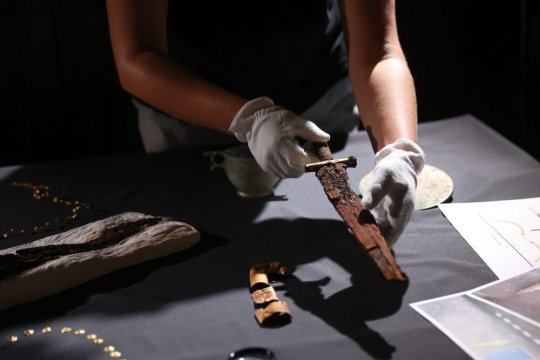
Dating back to the 4th to the 6th century CE, the sword, along with several relics, have been unearthed from a warrior burial, who was an inhabitant of the Taman Peninsula, Heritage Daily reported on Saturday.
The sword suggests a political and cultural connection with the Sassanian or Neo-Persian Empire from modern Iran and Iraq, likely given as a diplomatic gift or taken as a military trophy, the report added.
Also, the archaeological project yielded pieces of a harness, buckles, and belt tips, as well as high-status items such as glass jugs, wooden and metal utensils, and wooden boxes with decayed cloths.
There is no doubt that the cited warrior was a representative of the elite of Phanagoria and was a bearer of the military aristocratic culture of the Bosporan Kingdom in the Migration Period, said one of the members of the project.
The ancient city of Phanagoria was a Greek colony, first founded in the Taman peninsula by Teian colonists in the 6th century BC after a conflict with the Persian king Cyrus the Great. The city grew into a major trading center that, along with the associated necropolis, covers an area of over 2223 acres.
Image below:King Cyrus the Great. Source:https://heritage-history.com/index.php?c=resources&s=char-dir&f=cyrus1
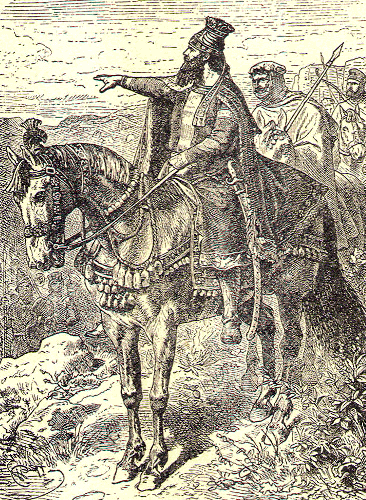
In many ways, Iran under Sassanian rule witnessed tremendous achievements of Persian civilization. Experts say that the art and architecture of the nation experienced a general renaissance during Sassanid rule.
In that era, crafts such as metalwork and gem engraving grew highly sophisticated, as scholarship was encouraged by the state; many works from both the East and West were translated into Pahlavi, the official language of the Sassanians.
The legendary wealth of the Sassanian court is fully confirmed by the existence of more than one hundred examples of bowls or plates of precious metal known at present. One of the finest examples is the silver plate with partial gilding in the Metropolitan Museum of Art in New York. The dynasty was destroyed by Arab invaders during a span from 637 to 651.
#ancient Persia#ancient Iranian sword#Krasnodar Krai#Phanagoria#king Cyrus the Great#Sassanian empire#Persian civilization#Russia#ancient Greece#Black Sea#ancient Greek colonies#culture#cultural exchanges#diplomatic gifts#ancient military trophy#heritage-history#arab conquest#Cyrus the Great
10 notes
·
View notes
Text
The ancient ruins of Philippi continue to produce marvels. A huge statue of Hercules was found there two years ago, and now the remains of an 1,800-year-old marble statue of Apollo has been unearthed.
31 notes
·
View notes
Text
Greek Mythology and the Thing often overlooked

I have recently been thinking a lot about mythology adaptions in media, especially with the new season of Blood of Zeus being out, me finding out some interesting things, and also me reading into Greek history.
Within Western Circles it is pretty universally accepted, that everyone can use Greek Mythology as a free for all, because it is white, European culture, and we were the ones doing the colonialism and stuff. So while a white person using Japanese mythology for example can be quite iffy, it is totally fine if anyone uses Greek mythology. Because it is like part of the western canon.
Buuuuuuuut... It is kinda a lot more complicated than that, right?
The issue is, of course, that Greece is part of Europe, yes, but the Greek myths are not that widely known because Greece went around at some point pushing their gods on everyone, who would listen (like Christians do), but rather, because the Romans took those gods and myth, while they colonized Greece, and then popularized the stuff. And more than that, because later on the British Empire found those stories and was like: "Oh, this is a neat thing to build our idea of white superiority on. Hey, hey, Greece, nobody said that you are white, did we?"
Because, let's face it. In most of Europe for most of the time the Meditterrean people were not considered to be white. Including the Greece. And I mean, I kinda knew that, but I never really thought about this until recently.
The moment I actually thought about this was actually, when I was looking through the VA profiles of Castlevania, found out that Theo James was actually Greek, and went like: "Oh, that is actually really neat." And then I was like: "Why though?" And then I went: "Ooooooh."
Same happened when I realized that Blood of Zeus is actually written by Greek writers. (Mind you, I still am not a huge fan of the series, but still, I think this fact is neat.)
It is in general something I am realizing more and more. How our discourse about colonialism often lacks a lot of nuance in those regards. And because of that the discourse about stuff like cultural appropriation does, too.
Especially as cultural appropriation is already such a big, complicated issue, that is far from Black and White.
Still, considering the history, I do not think that it is fair to look at Greece in the same way we do look at the actually colonial empires like Britain, Spain, Portugal, France, Belgium and Germany for the most part. Because their history is quite a different one and a lot more complicated.
#greek mythology#greek myth retellings#blood of zeus#greece#ancient greece#greek gods#colonialism#history#colonial history#percy jackson#rick riordan
23 notes
·
View notes
Note
I don't know if here in Greece we do the same with our own artifacts and marbles, but for the British museum to own 100.000 plus artifacts and only displaying 6.000?? Yeah doesn't make any sense then not to give them back what is ours.
If fact not only it would be a smart choice but the museum could show to the world the other artifacts they have not yet shown to the world. That means people would come expecting nee stuff to see and we get our marbles.
Side note but the british museum also has The Nereid Monument, finest of the Lykian tombs found at Xanthos, in what is now SW Turkey, which is huge aside from many ancient Greek vases, small statues, plates etc.
Typically all large museums have big store rooms where they keep a lot of artifacts. Some are in maintenace, some are used for loans, some for seasonal exhibitions etc
In the museum of Ancient Olympia they have like 100 Corinthian helmets in good condition that are not exhibited at all, probably because there are, well, dozens of them, and only a handful are in the proper exhibits. Joke's on them though, I am still waiting for them to make an extra room / hall where they will exhibit all those helmets with mystical placement and lighting. Wouldn't that be cool? Besides, these helmets were offerings of ancient soldiers to the place they held sacred (Olympia), it's a pity for these helmets to be locked in store rooms for nobody to see.

But for a FOREIGN museum to do it, that's insane. And let's just say they are keeping an extra collection for the aforementioned reasons. 100 thousand artifacts?????????????? Like this can not be explained or justified no matter how hard one tries. This is some inexcusable insufferably entitled shit right there.
#greece#british museum#anti british museum#western colonialism#museums#peloponnese#ancient olympia#elis#ilia#peloponnisos#mainland#greek culture
61 notes
·
View notes
Text

The term Judaism derives from Iudaismus, a Latinized form of the Ancient Greek Ioudaismos (Ἰουδαϊσμός) (from the verb ἰουδαΐζειν, "to side with or imitate the [Judeans]"). Its ultimate source was the Hebrew יהודה, Yehudah, "Judah", which is also the source of the Hebrew term for Judaism: יַהֲדוּת, Yahadut.
The term Ἰουδαϊσμός first appears in the Hellenistic Greek book of 2 Maccabees in the 2nd century BCE (i.e. 2 Maccabees 2:21, 8:1 and 14:38) .
In the context of the age and period it meant "seeking or forming part of a cultural entity" and it resembled its antonym hellenismos, a word that signified a people's submission to Hellenic (Greek) cultural norms. The conflict between iudaismos and hellenismos lay behind the Maccabean revolt and hence the invention of the term iudaismos.

#kemetic dreams#hellen#jews#Yehudah#Yahadut#Hellenistic Greek#ancient greek#european#colonization#colonialism
15 notes
·
View notes
Note
Funniest part of the first Wonder Woman was the reveal that Ares being a dumpy looking British guy with a mustache wasn’t even a disguise, dude just looks like that
Ares, god of war, looking like an old timey British man is weirdly fitting.
#get it? bc British colonialism#greek mythology#ancient greek mythology#greek pantheon#ares#ares god of war#ares greek god#Wonder Woman#wonder woman movie
13 notes
·
View notes
Text



Fragments - Roman Britain and Naukratis
* photos 1-2: fresco fragments, London
* photo 3: vase fragments, Naukratis (Egypt)
* British Museum
London, June-July 2022
#ancient#fragment#Roman#Greek#fresco#vase#detail#Roman Britain#Naukratis#Greek colony#art#animals#bird#British Museum#my photo
50 notes
·
View notes
Text
Alexander Balwinder Iskander Jaswinder
ever wonder why Punjabi names end in -nder or rather, why that isn’t unique to Punjabi?

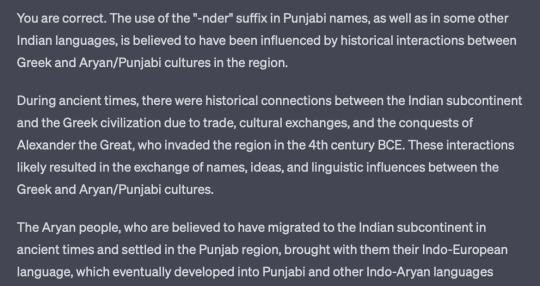
#punjabi#india#aryan invasion#greek#sanskrit#ancient history#Alexander the great#macedonia#indus valley#punjab#pakistan#south asia#buddhist#buddha#alexander#jaswinder#bhangra#classical greek#colonization#colonialism#bollywood#tamil#dravidian#history#pallava#yavana#brahmin#vedism#hindu#hinduism
2 notes
·
View notes
Text
When Cultural Appropriation is Good for Civilization
A look into cultural appropriation that attempts to temper the negative into a historical perspective.
Cultural appropriation has become a buzzword in recent years, with some claiming that it is a form of oppression that should be eliminated from society. Many people view cultural appropriation as a societal ill because it involves the adoption and exploitation of elements of a culture by members of a dominant culture without regard for the original culture’s values, traditions, and history. This…

View On WordPress
#ancient empires#antiquity#art#bias#civilization#cognitive bias#colonialism#conquest#cultural appropriation#culture#diversity#empire#genocide#greece#greek#imperialism#iran#islamic golden age#melting pot#music#muslim culture#negativity bias#nuance#oppression#persia#persian#roman#rome#science
1 note
·
View note
Video
undefined
tumblr
Listen to the characters from my novel Priestess of the Lost Colony read lines of their dialogue from the book out loud!
The voice-overs aren’t the work of actual voice actors, but rather AI voices I used on the text-to-speech website MicMonster. Unfortunately, I couldn’t get the Greek-accented voices on that site to pronounce all the words correctly, so I had to use voices with American accents for the three Greek/Achaean characters (Philos, Scylax, and Kleno).
#Priestess of the Lost Colony#original characters#ancient egypt#egyptian#kemet#african#black people#ancient greece#greek#hellenic#bronze age#alternate history#video
0 notes
Text
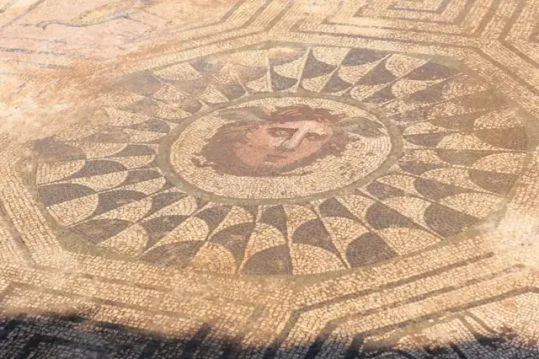
Archaeologists Unearth Ancient Mosaic of Winged Medusa in Spain
The stunningly preserved Ancient Roman mosaic floor was found at the Huerta de Otero site in the city of Mérida.
In both ancient and modern interpretations, Medusa is often known as a monster — a Gorgon with tresses of serpents whose stare turned men to stone. This version typically appears in children’s movies and fantasy thrillers, but her image hasn’t always been so awe-inspiring. In late June, archaeologists in Western Spain uncovered an Ancient Roman mosaic floor that depicts Medusa with tiny wings and flowing locks of hair, thought to have been used as a protective symbol.

The mosaic was found in the city of Mérida’s Huerta de Otero archaeological site. Ancient Romans established a colony there in 25 BCE named Augusta Emerita. Traces of its former inhabitants — including an amphitheater and a bridge — can be found throughout the modern-day city. “[The site] is of an exceptional nature due to the level of conservation of the ruins and, above all, the ornamental elements that decorate the well-preserved house: not only the mosaic of the Medusa but also paintings and sculptural motifs,” said archaeologist Félix Palma in a statement.
The Huerta de Otero location was excavated in 1976 but lay untouched for decades. Research picked back up in 2019, when the city employed professional archaeologists and students from its Barraeca II Professional School to explore the ruins. Since then, the team has uncovered an Ancient Roman defensive wall, a road, and the home of a wealthy family.
The Medusa mosaic adorned the floor of this home. Depictions of fish, peacocks, and carefully tessellated patterns surround the artwork’s central figure: a human-like Medusa, her gaze turned to one side.
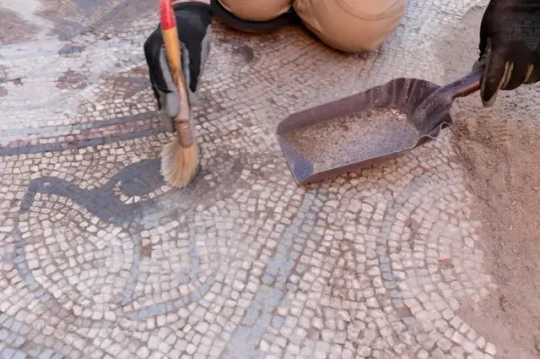
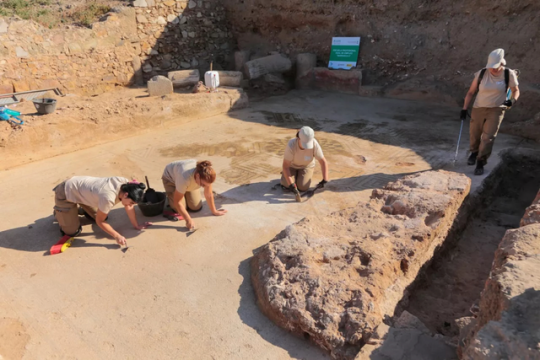
Although this image diverges from some contemporary renditions of the mythological figure, the mosaic’s winged version was common in Ancient portrayals of Medusa. While early Greek depictions of the mortal-turned-monster, cruelly punished for being raped by the god Poseidon, show her as grotesque, Medusa’s image softened by the time of the Ancient Romans. Beginning in the Classical Greek period, her face acquired more human attributes. It started to be rendered with symmetry and youthful beauty in the following centuries.
Other Ancient Roman mosaics featuring the head of Medusa have been discovered throughout Spain. Medusa again comprises the focal point of an Ancient Roman mosaic in a 115–150 CE work found in Rome, where she can be seen sporting human curls and a snake around her neck. A 1st-to-2nd-century ornament from a chariot pole shows a young woman with curly locks (although a couple of snakes still peer through her tangle of hair).
In Ancient Greek mythology, Perseus killed Medusa to avoid being turned to stone. Medusa, in her early terrifying form, was used as a protective symbol — “an image of evil to repel evil,” Madeleine Glennon writes in a 2017 essay for the Metropolitan Museum of Art. The goddess Athena famously included a representation of Medusa’s severed head on her protective cloak or aegis. In Ancient Rome, her beautified image was still employed as a protective symbol, although the depiction shifted into a form more similar to a woman than a monster.
By Elaine Velie.

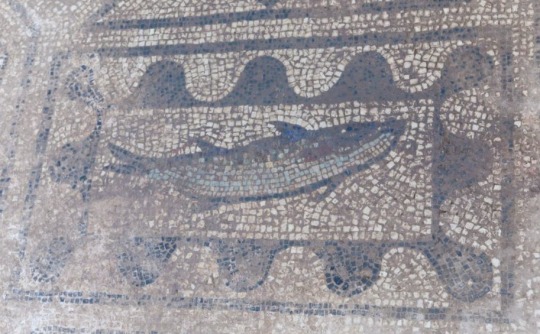
#Archaeologists Unearth Ancient Mosaic of Winged Medusa in Spain#mosaic#roman mosaic#Mérida Spain#Huerta de Otero archaeological site#ancient artifacts#archeology#archeolgst#history#history news#ancient history#ancient culture#ancient civilizations#roman history#roman empire#roman art
602 notes
·
View notes
Text

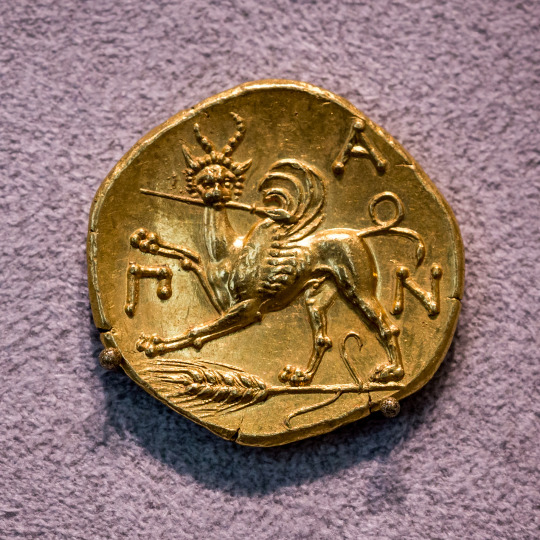
Gold stater (diameter=18 mm; weight=9.09 g) from the ancient Greek city of Panticapaeum, a Milesian colony on the Black Sea. The obverse bears the head of the god Pan, shown in three-quarter view and crowned with ivy. The reverse depicts a griffin with a spear in its mouth, standing on an ear of grain (the Black Sea region was an important center of grain production for the ancient Mediterranean world). Around the griffin are the Greek letters ΠΑΝ. Now in the Münzkabinett der Staatlichen Museen, Altes Museum, Berlin. Photo credits: ArchaiOptix/Wikimedia Commons.
#classics#tagamemnon#Ancient Greece#ancient history#art#art history#Greek art#Ancient Greek art#Panticapaeum#Greek religion#Ancient Greek religion#Hellenic polytheism#God Pan#coins#ancient coins#Greek coins#Ancient Greek coins#stater#numismatics#ancient numismatics#metalwork#goldwork#Altes Museum
401 notes
·
View notes
Text
The thing about oral traditions

Alright, all that rambling about the Greek Gods with Stray Gods and the godly origins... (maybe I am doing more in the next few days) It kinda brings me to a topic that I think a lot of people who do not interact with that kinda stuff a lot do not realize: Most of human history and mythology has been recorded not in the written form, but in oral tradition. That is through stories told through a story teller, through song or through (at times ritualistic) plays.
Those stories would at times be just kept within families/communities (this is your gentle reminder that the nuclear family did not arise until the 20th century), or in some cultures kept alive through a special skilled kind of tradesman. Something like bards. And even within those folks there were both the variation of people travelling the lands to collect and relay stories - or people keeping to one place and collecting stories there.
There is the very, very common misconception (that is closely linked to white supremacist believes) that written down stories are of more value, due some wrong perception of written stories being harder to alter/fake - and them being easier to date.
Don't get me wrong, yeah, if something got chiseled into some rock 1500 BC and that rock survived until today, we could absolutely read up on the rock......... if we can read the writing, that is. But... here is the thing: There have been quite a few writing systems that got lost. And also... Chances are that the rock did not survive. But maybe someone copied the text and then it was copied again and then again, because the printing press was not around for thousands of years...
You see the issue, right?
Yes, stories get altered everytime they got retold. But there is a good chance a lot of historical texts might have been altered or even faked.
Making one not necessarily better than the other.
The big issue with oral stories is, a) that orally transmitted stories are often very hard to date, and b) are often altered massively by cultural shifts, going so far that c) they get just lost.
Now, when it comes to the entire dating stories stuff, the best we basically can do is comparative mythology and the like. We can look where stories parallel each other and knowing the links between the cultures, we can then estimate how far back a story can go. But even so... see, there is this issue that with that stuff it usually goes so far into the mythical sphere that it is hard to say whether there has been a true core to things. And that is without going into the fact that we lost writing systems. The Indus Valley civilization wrote stuff down (though probably mostly like administrative stuff), but... Well, we don't know what is written there. Because we cannot read their writing.
A lot of people might have heard about the issue b) in terms of the Norse mythology. Because... yeah, other than some might think... The original mythology was lost, because the oral tradition was broken through missionary work, with the myth than being recorded by Christian folks (with a bias) already after part of the tradition was already lost. Like... We all love Loki, right? Welp, surprise, there is a chance that Loki never was actually a God in Norse Mythology.
And the Norse mythology was quite lucky in fact. Because we have some of the stuff still recorded. But there were a ton of oral cultures that just... vanished. At times because the culture vanished (for example because they died through famine, war or plague) or evolved further with the stuff shifting until it became unrecognizable (like the old Greek cultures fusing and involving into the Hellenistic culture). And at times due to outside forces (like colonizers) knowingly and deliberately forbidding the transmission of the stories.
But of course... You know. Folks tried and succeeded the latter with written stories too, trying and at times succeeding at erasing parts of history and mythology.
It is easier to study written history and mythology. But... We really gotta move away from discrediting oral traditions. Something that is still very much done in mainstream western culture. Because the oral traditions are very, very important and should not be forgotten.
#stray gods#mythology#oral tradition#oral history#ancient mythology#ancient history#norse mythology#greek mythology#colonialism
5 notes
·
View notes
Note
https://twitter.com/FreshSummerWind/status/1623961164416688130?t=yNPRu014GXgk50jAvxCIXg&s=19
It's a small clip but as a Greek i didn't know that this man did it to Sparta and other regions in Greece..i mean why does it brought him joy destroying ancient ruins? For what? France? It makes no sense and it's sad because they took advantage of Greece being occupied by the ottomans back then they did as they pleased.
Call it envy? Jealousy? I have no idea why destroy history. Thankfully now archeologists fixed many ruins but still..
So when I first saw this, I was convinced it was some hoax, because I couldn’t wrap my head around it. But no. It really is true. I searched Wikipedia about this asshole.
The video is about French priest Michel Fourmont (1690–1746).
“He was one of the scholars sent by Louis XV to the eastern Mediterranean to collect Byzantine inscriptions and manuscripts. He is now best remembered (what a phrasing, wiki) for the destruction of antiquities in Ancient Sparta and for having presented as genuine some forged inscriptions.
Fourmont made collecting ancient Greek inscriptions his primary focus. Fourmont would report to Count Maurepas that he copied 1,500 ancient inscriptions (300 in Sparta). His technique was brutally direct. Workmen were hired to dismantle any structure that might contain ancient stones with letters on them. Fourmont reported paying 1,200 man-days of labour to dismantle monuments in search of ancient marbles. In a letter to Bignon dated 20 April 1730, Fourmont wrote:
For more a month, although ill, I am working with 30 laborers for the complete destruction of Sparta; hardly a day goes by without finding something, and some days have produced as many as 20 inscriptions. If I could do at Tegea, Antigonia (Mantineia), Nemea and one or two other cities what I have done at Hermione, Troezen, and Sparta, it wouldn't be necessary to send anyone here. There would be nothing left. I have not been able to knock down the remains of the former places, because of the plague, without which they would be totally destroyed. For lack of books, these destructions shall be the only way to make illustrious a voyage which has caused such a stir. (…) Speaking frankly, I myself am astonished at this expedition. I have read nowhere that, since the restoration of literature, anyone has had the idea of turning whole cities upside down to find these marbles, which are the only irreproachable evidence of antiquity, the only things capable of shedding light on the dark corners of history, of the administration and religion of ancient peoples. Only in this manner can one contribute usefully to science. So convinced am I that Sparta is the fifth city of the Morea I have destroyed. Hermione and Troezen have had the same fate. I have not spared Argos, Phliasia, and some others. I am currently working to dismantle the temple of Amyclaean Apollo down to the foundation stone. Every day one finds things you will be pleased to see. ... I would destroy others with the same ease if I were left to do so.
Fourmont was called back to France before he could visit ancient Olympia as planned. (Thank God). Later travelers to Greece were horrified at Fourmont's descriptions of the ancient monuments he destroyed. Fourmont is alleged to have written in one of his letters that he had destroyed certain inscriptions after transcribing them. The British traveler Edward Dodwell reported that when he visited Sparta (in 1806) he was shown marbles that Fourmont had mutilated so as to make their inscriptions illegible. That some of Fourmont's most important inscriptions from Amyclae could not be relocated helped fuel scholarly suspicions that he had either forged or seriously misrepresented the inscriptions he reported.”
Like, this is an actual person that existed. Not a Disney villain.
And for some visual context:
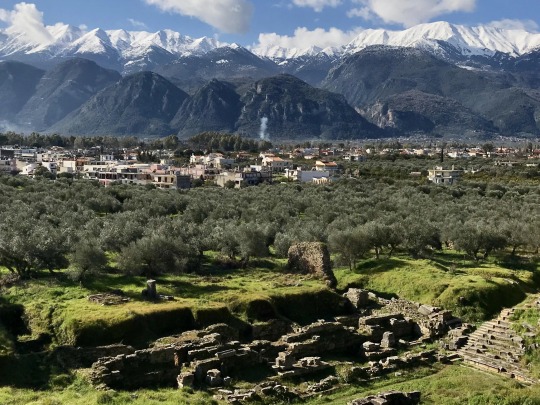
What’s left of Ancient Sparta
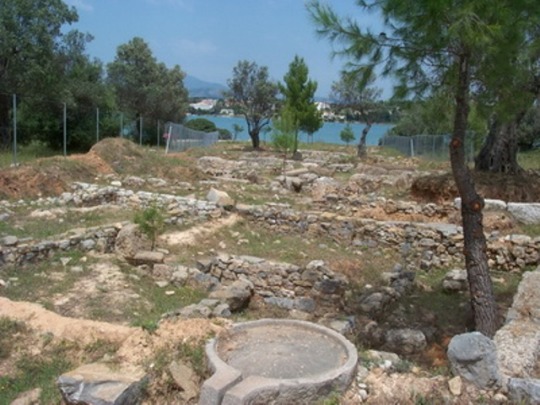
Ancient Hermione
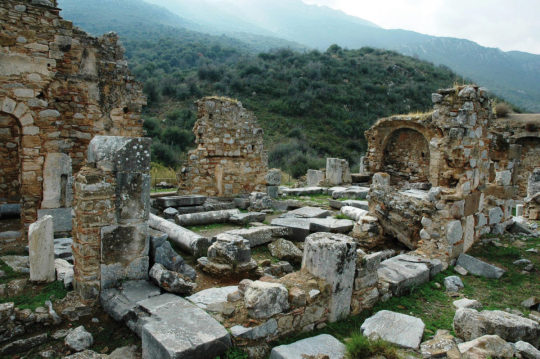
Ancient Troezen
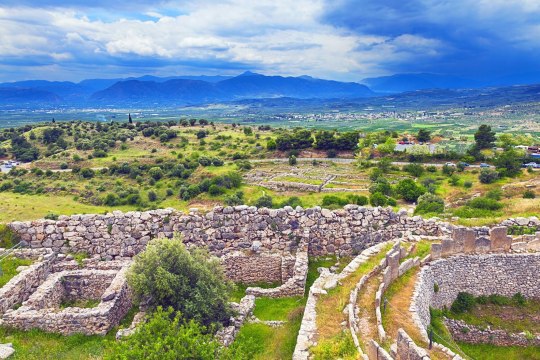
In case you wondered why mighty and famed Argos isn’t a better known archaeological attraction like others, apparently we have this gent to thank
#Greece#ancient greece#western colonialism#Ancient Greek ruins#history#greek history#Sparta#Laconia#peloponnese#peloponnisos#mainland#anon#mail
72 notes
·
View notes
Note
https://x.com/CorenLaVolpe/status/1787971755027612092
As much as a Greek enjoyed the Hades game having people literally taking for granted the designs of the gods as legit is problematic.
No Hermes isn't Asian coded. He's Greek like every God. Literally what does the word Greek next to Greek gods mean to them? An accessory? Give me a break
I got a few asks like this, so I will try to answer them here. This is the post the asks are referring to, and this is the post that started the whole discussion afaik:
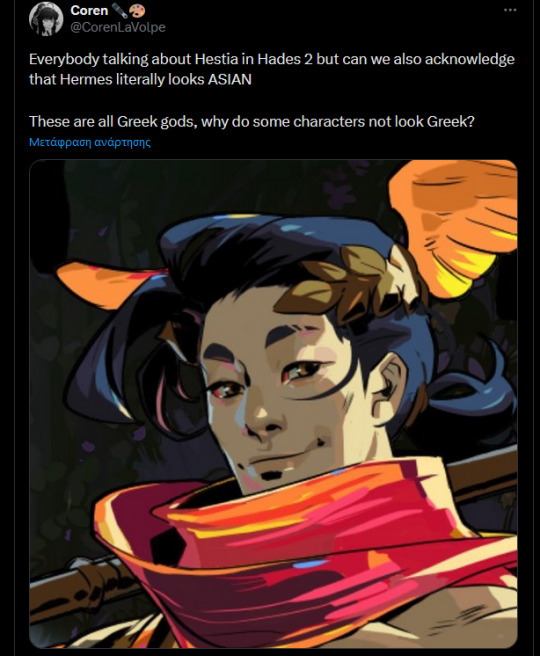
This is a whole phenomenon that has lasted for decades in the US, first with USians presenting the gods as North Europeans and now as "everything but" North Europeans to combat the previous racist trend. However, they are still completely tone-deaf, self-absorbed, and privileged because while they do this "correction" they're ignoring actual Greeks, and Greek depictions (and depictions of Greek gods in various areas in the past). Westerners might not be aware of this, because they don't know how badly the Greeks have been treated by powerful countries in the past (including their US, thank you for the Junta and our recent fighters' deaths, honey) but the protests about the gods' design are anti-colonialist.
I want you to imagine this trend with whatever pantheon you want from Africa, Asia, South America etc. Imagine that for centuries they are presented as super White North Europeans by certain powerful nations. Now the same nation who did this racist shit in the past comes around and does more racist shit, by NOT presenting these ancient gods as their people view/viewed them but they present them as everything BUT the appearance they had in all their depictions by the locals. All the while NEVER listening to what the people of this culture tell them, all the while comparing the locals to these gods and finding them uglier and savage. Why would this be acceptable? And why are people so comfortable to forget their cultural sensitivities when it comes to Greece?
(I am aware the US racism also expanded to other pantheons but it didn't happen in this exact way so all I'm asking is to walk in our shoes for a bit, to experience a different flavour of colonialism)
This blog stands for absolute equality and it's heavily anti-racist and anti-fascist, with various resources and support links for minorities in Greece. Everyone is welcome here. This blog believes that if you are of Chinese, Pakistani, Nigerian, Roma descent in Greece you must have the same rights as everybody else and the way you look is not "lesser" than anybody else. I just ask people to consider - especially if you are an immigrant - how you, your parents, your grandparents would feel when seeing your important cultural figures treated like this by the US.
As you have understood by now, changing the depiction is not suddenly okay when the Greek gods now have the palest skin with blue eyes and blond hair. No, that's still racist, and Greeks have been repeatedly told that they are lesser for not looking like the beauty ideals these northern countries projected onto our gods.
Asking for accurate god depictions is a matter of wanting your culture to be treated like.... not a prop, for once. Everyone is free to interact and relate with the Greek culture but when you take the Greek culture and its depictions out of the equation, then the whole thing becomes "playing with dolls", and a fandom (as is the case already for the US).
The Greek gods have been used by Westerners in the past to promote White supremacy, and today they are used by Westerners to combat it; but it still happens in the most divorced sense from the Greek culture. USians are still sooo hesitant to REALLY look at another culture that they'd rather lose common sense (aka, depict gods as the locals see them for millennia) than not white-knight for their fellow Westerners. It's actually infuriating that progressives in the US still miss the mark when it comes to combating US neo-colonialism, and whatever elements left in their culture from colonizing European countries.
And how can we tell the Greek gods are used as props in this US political climate? Simple. They themselves will tell you "It's okay to depict those gods however you like because 1. They can transform 2. They have been worshipped by people of different appearances 3. Greeks can have more than one appearance 4. They are not real. " Then, you tell them "Then why don't you depict Chinese, Indian, Nigerian pantheons whoever you like today? These pantheons all have the above four conditions apply. (No. 4 depending on your beliefs)" And when you strip those first layers, they tell you the actual root cause: "But Chinese, Indian and Nigerian people are still oppressed. Plus, non-white people need to see themselves in media, so here is the chance!"
So, they admit that their only guide for how disrespectful they will be to one's heritage figures is actually the oppression status of that minority (just!) in the US. (Which shows they still don't give a shit about Greeks, cause otherwise they'd still know that Greeks still face bigotry in the US for how they look, how their names are, their customs) . To POC in the US: The moment your oppressors believe your oppression is gone, expect your pop culture to forget (again) all respect for your ancient gods and treat them like cool "new" products for their capitalist game.
And the above discussion paints the Greek culture and Greek figures as a culture-less empty slate, that can be made to represent every person in the whole world. It's US culture, even! But Greek culture is hideous actually, and the Greeks are racist brutes who get in our hair the whole time. Fuck the Greek people and their ancestors' depictions. Greek mythology is a product of no culture, actually, and we can treat the gods like self-inserts in our favorite fanfic. And this is totally not a colonialist mindset! Greeks are not robbed and genocided anymore, and we gave them "white" status in our country a few decades ago (but these ethnic hairy people are still not the same as us, obviously!), and the strings we pull to control Greece are not visible anymore to our own people, so we're good 😊
And, just to be clear: Greek gods are ethnically Greek, as every other [insert cultural descriptor] gods are from that certain culture. The Greek people consider themselves literal progeny of those gods. The first Greeks were born of the gods. Even today we call ourselves Hellenes because one of the first Greeks, the man Hellen, who was born of the gods. If the Greek gods don't express Greek cultural norms, and POVs, and ways of thinking about the world, and are not part of Greek history, what the hell are part of?? Cantonese culture? Do they represent Scandinavian ancient values perhaps....? Do they follow the philosophy of a First Nations tribe?? (This is more a matter of culture, not appearance since various people can be part of a culture. However, it needs to be said, because Westerners are willfully blind to common sense at this point.)
See this video from a Greek Canadian on Greek gods being ethnically Greek
To address one last thing: One person said "why didn't you say anything about how the gods were designed in the first game?" Well, I had made a post about it but some told me "noo they didn't change their race, they just have different colors like green, blue, pink, dark brown, and grey for an artistic touch". I was like "whatever, nobody knows, I have a life to live" so I deleted that post and didn't dwell too much on it. But the anti-colonialist message was the same as in this post, so that's another chance to highlight it.
101 notes
·
View notes
Text
Gaza, that ancient city on the eastern shores of the Mediterranean, has come to be the political and moral compass of the entire world. Despite the pervasive destruction, Gaza stands not as a place in need of lessons. Instead, it is itself the poignant lesson of our modern age – a litmus test for humanity. As the death toll continues to rise, it becomes increasingly challenging to conceive of a violence more profound than that inflicted by machine guns and aerial bombardment. However, Israeli colonial violence – both in Gaza and Palestine more broadly – has historically manifested at various scales. It extends from the confines of a bedroom to encompass a neighbourhood, a whole city, and stretches to the scale of a regional geography.
Understanding the destruction of Gaza calls for a dual perspective. It requires zooming in on the intimate scales of violence while also being aware of these broader manifestations. At the core of Israeli colonialism in Palestine is the logic of partition, a paradigm fundamentally at odds with the land, its people and its history. Gaza has long been a nexus of interconnected worlds: for millennia, it served as a vital crossroads, connecting Palestine to Egypt and bridging the continents of Asia and Africa. The roads from Gaza to Bir al‑Sabe’, Jaffa and Jerusalem have witnessed the passage of visitors, merchants and pilgrims from diverse corners of the world. The city’s social, cultural and economic prosperity has been woven into its geographical openness, a defining feature in Palestine’s long history. Any thought about Gaza and Palestine’s future is bound to reckon with this history.
The enduring imprints of Gaza’s geographical openness are discernible in both its social and built fabrics. This ancient city has witnessed the rule of various empires and civilisations, including the Egyptian Pharaohs, Greeks, Romans, Byzantines and successive Islamic dynasties – each contributing to the rich tapestry of the city. Gaza is home to historic treasures such as the Anthedon Harbour, the port that linked the city to the Mediterranean world in the Roman era; the Great Omari Mosque, one of the most significant mosques in Palestine; and the Church of Saint Porphyrius, believed to be the third oldest church in the world.
These historic landmarks, among residential buildings, universities, museums and cultural institutions, have not escaped the intentional targeting and destruction inflicted by Israel. In essence, these sites embody all that Gaza stands for and Zionism doesn’t – geographical openness and historical continuity. In historical terms, the 75 years of Zionist domination in Palestine represent an anomaly, as Gaza and other cities have perennially thrived on cultural diversity and interconnection.
113 notes
·
View notes